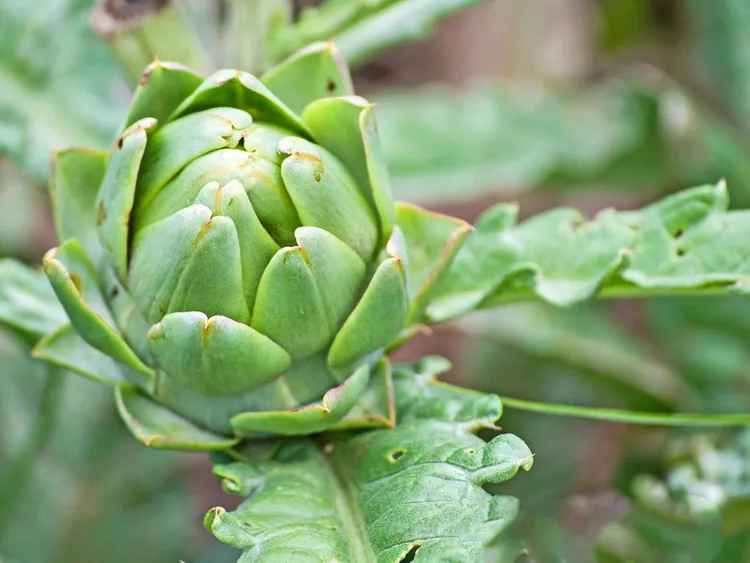Pothos is a popular houseplant that’s easy to grow and care for. These vines are easy to grow, require little maintenance, and can tolerate low light. The golden pothos is a yellow variegated species that’s readily available. However, there are many cultivars, such as the Hawaiian Pothos (Epipremnum Aureum ‘Hawaiian.’)
It may take a little more searching to find this cultivar. But it is worth the effort for pothos lovers. The golden pothos still has the same glossy, heart-shaped leaves. However, the variegation makes it stand out. The larger leaves have lighter yellow flecks, as opposed to the darker yellow of the golden. It rarely reaches deep yellow shades, even when it gets darker at high light levels.
You can grow this vine-like species in a pot and train it to climb a pole or trellis. Pothos is invasive1 when planted as groundcover in Hardiness Zones, where it can live outside all year. Pothos is a very effective air purifier, according to studies.
Hawaiian Pothos is also known by this common name.
Botanical name Epipremnum Aureum ‘Hawaiian
Family Araceae
Plant TypeVine
Mature Size Up To 4 feet tall with longer trailing vines
Sun Exposure Full sun or partial shade
Moisture but well-drained soil type
Soil pHNeutral, Acidic
Rarely does Bloom Time bloom
Flower Color N/A
Hardiness zones 10-12 (USDA) can be invaded1
Native Area South Pacific
Pets and toxic substances
Hawaiian Pothos Care
Hawaiian pothos has a reputation for being hardy, so it is suitable for even those with brown fingers. For the best color, offer bright but not direct sun. Avoid overwatering and make sure to shake the trailing vines often.
Hawaiian Pothos leaves viewed from a slightly raised perspective
Hawaiian pothos leaves in close-up
Hawaiian pothos leaves variegated close-up
Hawaiian pothos leaves with variegation.
Hawaiian Pothos leaves in sunlight
Light
The Hawaiian pothos can survive in a variety of light conditions. This is a very popular bathroom plant due to its ability in shady areas. Position your plant in a bright, indirect area to get the best growth and variegation. Direct sunlight can bleach the leaves and make them look duller.
The Hawaiian Pothos does not like prolonged direct sunlight, but it needs slightly brighter conditions to develop its best variegation.
Soil
Hawaiian pothos doesn’t care about the type of potting soil you use, as long as it drains well. This plant does not like wet feet. If you have only heavy potting soil then try adding perlite, peat-moss or the more sustainable Coco coir. This will improve drainage. Your pothos won’t complain if you only have a dry, rocky mixture.
Water
Hawaiian pothos is most commonly killed by overwatering. Standing water can cause root rot. These plants are tolerant of neglect. Let the soil dry completely before watering. Do not rely on your eye to determine the moisture level. Instead, use a moisture sensor or a finger to probe the soil. When your plants’ leaves begin to droop it is a sign that they are thirsty. Wait too long and the glossy leaves may dry out along their edges.
Temperature and Humidity
Your Hawaiian pothos will do fine unless your house is very cold during the winter. They can survive temperatures as low 50 degrees Fahrenheit, but thrive between 65-75 degrees Fahrenheit.
But these tropical plants don’t like dry air. If you cannot provide humidity levels between 50 and 70%, consider investing in a humidifier. You can also add a pebble tray with water underneath the plant.
Fertilizer
Hawaiian pothos are not heavy feeders, so they may do fine in a mix that is rich in organic material. If you want to make sure that your plant has a glossy, healthy foliage, and develops quickly, it is worth feeding the plant twice a month throughout the growing season. You can use any balanced houseplant fertiliser diluted half strength, or a natural solution like fish emulsion.
Pruning
Hawaiian pothos don’t require you to use pruning shears on a regular basis. If the vines become too long, you can trim them. Trim any yellowing or dying leaves to make sure that all energy and nutrients are directed to the healthy foliage.
The Best Gardening Books for 2023
Commerce Photo Composite
Propagating Hawaiian Pothos
Pothos makes a great gift for friends and family. They are easy to grow from stem cuttings and can be cared for by anyone. Follow these steps to have the best chances of success in the spring or summer.
Use sterile, sharp shears or scissors to cut a piece of a healthy stem. The cutting must have at least 3 leaves.
Remove the leaves at the base of the stem. This will reveal the node (the bump where the aerial roots grow from).
Place the cutting into a tall, clear jar with fresh water. Or place it in a pot filled with a potting mixture that drains well. Submerge the node at the bottom of the jar or pot in water or soil.
Place the cut in a warm area where it will be exposed to bright, indirect light.
Make sure the soil is not too wet, but moist.
Keep an eye out for new roots. Transfer the cuttings to a pot with potting soil once they reach a length of a few inches in water. If you gently pull on the stem, it won’t move easily. This means that roots are growing in the soil.
Potting and Repotting Hawaiian Pothos
Hawaiian pothos is a fast-growing plant that will not tolerate its roots being crushed. Be on the lookout for signs of pot-bound plants. You can tell if the roots are starting to come out of the drainage hole, if the foliage is wilting despite the fact that you have added more water or if the water just passes through the potting mixture without being absorbed.
Choose a pot that is one or two sizes bigger in both diameter and depth. Fill it up with fresh nutrient-rich soil instead of recycling the old one. Also, be careful not to disturb the plant’s roots. With a mature, healthy plant, you may have to repot the pot as frequently as once a year.
Common Plant Diseases and Pests
Your Hawaiian pothos will not be plagued by pests. Overwatering or overfeeding your plants can lead to mealybug infestations. The plant can be treated with an insecticidal solution or soapy water.
Hawaiian Pothos: Common Problems
Hawaiian pothos are easy to grow, but they can still be neglected. Early signs of a plant that needs to be cared for can prevent it from dying prematurely.
Black Spots
You may see black spots on the beautiful foliage before your plant succumbs due to root rot. This is a sign that your plant needs to be allowed to dry out.
Brown Tips
If you let your Hawaiian pothos go for long periods without watering, the edges and tips of the leaves may curl and brown.
The FAQ
Is Hawaiian pothos rare?
Finding a Hawaiian Pothos is more difficult than a Golden Pothos. It may be necessary to purchase one from a specialist retailer rather than a regular plant retailer. They aren’t rare enough to command high prices, but they do have a limited supply. It’s important to make sure that the plant hasn’t been mislabeled. It’s easy to mix up golden pothos cultivars and their juvenile varieties.
Are Hawaiian and golden pothos the Same?
Hawaiian pothos, a cultivar from golden pothos. Both have similar appearances and care requirements, but an experienced eye can tell the difference. Hawaiian cultivar leaves are larger, faster-growing and can tolerate more sun and dryer soil than golden pothos. The Hawaiian pothos is distinguished by its lighter, almost cream-colored variegation. Golden pothos variegation tends to have a darker yellow color.
What is the light requirement of Hawaiian pothos?
Pothos are known to be able to tolerate low-light conditions. They do better in indirect, bright light. Hawaiian pothos can also benefit from brighter light.





